You don’t need any special tools like a meditation cushion, a timer, or a long break to practice mindfulness at work. What truly makes a difference is having a simple way to pause, gently step back from the constant stream of thoughts pulling at your attention, and refocus on what really matters. In Acceptance and Commitment Therapy (ACT), this helpful skill is called cognitive defusion. It’s about seeing thoughts as just words or mental pictures rather than commands you must follow (1). Even a quick mindfulness exercise can sometimes lighten a heavy thought, making it feel less overwhelming in just a minute or two. Brain science supports this: when you label your thoughts or feelings, your mind’s “alarm system” calms down, and the part of your brain that helps you stay grounded takes over (2). So, simply giving your thought a name can help it lose some of its hold on you.
This simple exercise is perfect for those busy moments, something quick you can do right at your desk, even in the midst of your work. There’s no need for silence, rituals, or special equipment. It’s just a practical, easy way to help you reconnect with the present moment whenever you need it.
A quick desk story (that might be yours)
Imagine this: Slack notifications keep popping up, the deadline is drawing near, and your mind quietly says, “If this isn’t perfect, they’ll see right through me.”
Your chest may feel tight, and your eyes might drift back to the same sentence repeatedly; it’s a common experience, and it can be frustrating. Rather than trying to fight those thoughts or prove them wrong, ACT gently guides you to recognize, “Oh, that’s just a thought,” and then softly redirect your attention to the next small step. This skill, called psychological flexibility, is at the core of ACT, and research shows that when people develop it, they tend to manage stress more easily, get unstuck more quickly, and even perform better in everyday life (3).
The Desk Defusion Routine (60–90 seconds)
1) Catch the thought.
Take a moment to write down the exact sentence that’s going through your mind. Perhaps it’s: “I’m going to mess this up,” or “They’ll hate this slide.”
2) Add a gentle prefix.
Next, in front of that line, write or say in your mind:
“I’m having the thought that…” I’m going to mess this up.
It might seem small, but that little change in wording really makes a difference. It encourages you to take a step back and see the thought as just a passing idea, not something set in stone as the absolute truth.
3) Read it slowly.
Take a moment to say it back to yourself at a gentle, comfortable pace. Remember, you’re not arguing—you’re simply observing. Just naming what you’re noticing helps your mind settle down, quieting the internal alarms and allowing you to concentrate on what comes next with more clarity.
4) Take one tiny step that matters (just two minutes).
After you’ve identified and named your thought, take a simple step that aligns with what truly matters to you. For example:
- If reliability matters to you, place your opener on slide 1 and verify that the file path works.
- If clarity is your priority, add a simple sentence that explains what your audience will learn in this section.
- If kindness to the future you matters, jot down a quick backup plan in your notes: “Plan B—talk it through without visuals.”
That’s the gentle rhythm: observe, name, and authoritatively encourage yourself to move forward. It’s mindfulness, right at your desk, seamlessly fitting into your day without needing to stop.
“Leaves on a Stream” – desk edition
There’s an interesting mindfulness practice where you imagine each thought as a leaf gently floating down a stream. Here at your desk, you can personalize this idea by visualizing the stream as your screen, making it a relatable exercise.
- Imagine your thought as a ticker message popping up on your monitor.
- Whisper to yourself, “There goes the thought…” as if you’re reading a subtitle.
- Just let it scroll off the edge and then gently shift your focus to your next small step.
The goal isn’t to get rid of or silence your thoughts; it’s about giving them space to gently move aside while you focus on what truly matters to you.
Three real desk moments
1. Procrastinating on a tricky report
- Thought: “This report is too tough, I’ll never get thid right.”
- Name it: “I’m having a thought that this report is too tough and I’ll never get this right.”
- Action that matters: Open the file and jot down a single outline bullet that helps advance the report.
2. Putting off a tough conversation with a coworker
- Thought: “If I bring this up, they’ll be upset with me.”
- Name it: “I’m having a thought that raising this issue will automatically upset them.”
- Action that matters: Take a moment to draft a gentle and clear sentence expressing your concern, and set aside 10 minutes to share it when you’re ready.
3. Second-guessing yourself before a presentation
- Thought: “Everyone will notice how nervous I am.”
- Name it: “I’m having a thought that everyone will notice my nerves.”
- Action that matters: Practice your opening line out loud once, then step into the meeting and deliver it anyway.
Pay attention to the flow: catch → name → step into what matters. That’s the ACT loop it’s about not pushing thoughts away, but gently unhooking just enough to help you choose the next small, values-based step.
Why this works (and why “stop thinking” never does)
- Controlling your thoughts usually backfires. You might have that moment where you tell yourself “don’t think about it” and then suddenly it’s the only thing on your mind. That’s what suppression does while Defusion follows a different path. Instead of struggling with the thought, try to acknowledge it, give it some space, and then gently shift your focus back to what you truly care about..
- Labeling takes the edge off. When you turn a thought into words, your brain seems to settle a bit. As the alarm bells fade, the part of your mind that helps you focus begins to turn on. It’s a tiny step simply naming what’s happening—but it can make the thought seem much less overwhelming.
- Flexibility over perfection. What’s really valuable here isn’t controlling your thoughts—it’s being flexible. ACT refers to this as psychological flexibility: being able to recognize whatever your mind brings up and still move toward what’s important. Studies have found that it’s connected to improved well-being and performance, and it can even help busy office workers (4).
FAQs (for people searching for ways to practice mindfulness at work)
Isn’t the point of mindfulness to quiet my mind?
Nope. Your brain’s main role is to generate noise, and it’s perfectly normal if it keeps chattering away. In ACT, mindfulness is all about gently noticing where your attention is and softly guiding it back to what’s truly important. Whether you’re making a quick edit during a slide presentation or enjoying a coffee break at your desk, you can practice this anytime.
Do I need a long session to start seeing benefits?
Not at all! Even just two minutes of exercise can really help ease a nagging thought. Think of it like stretching at your desk—you don’t need a yoga retreat to feel a bit more refreshed and lighter.
Is this therapy?
No, it’s more like a mental skill that everyone can practice and benefit from. But if you’re feeling overwhelmed or weighed down day after day, it might be a good idea to reach out to a professional who can offer you genuine support and guidance.
Try this in ‘MetaMindful’
Just open the app and go to Defusion Session → Tag & Move. Soon, you’ll be ready to go!
- Take note of a lingering thought.
- Put a simple prefix on it: “I’m having the thought that…”
- Do one small thing that brings you back to what’s important today.
Practicing mindfulness at work isn’t about escaping or seeking silence. It’s about carving out just enough space in the midst of the chaos to stay focused on what’s important.


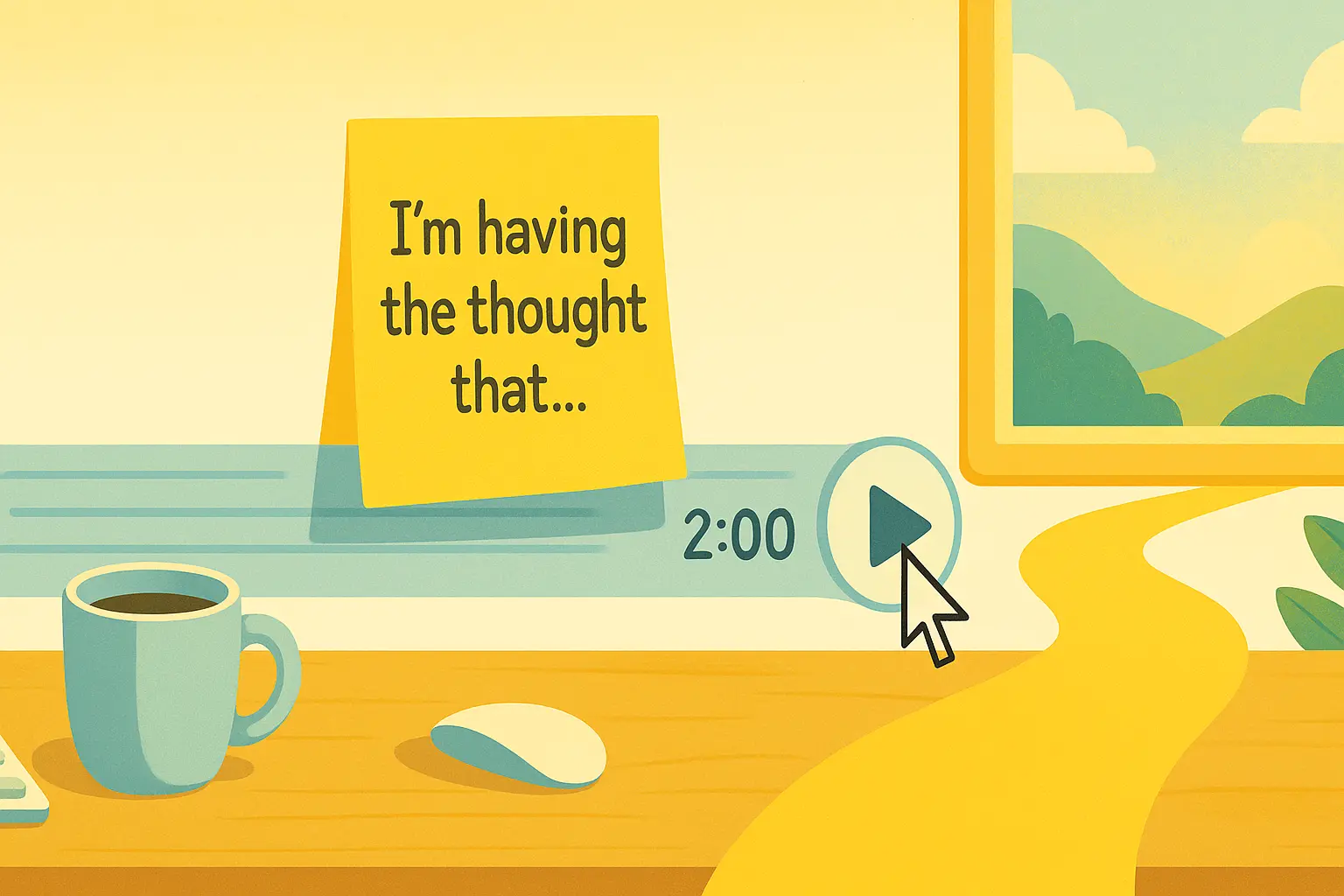
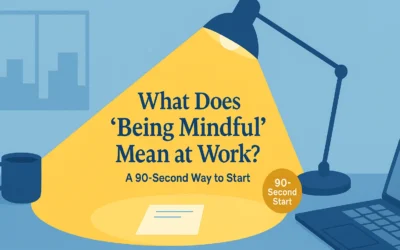
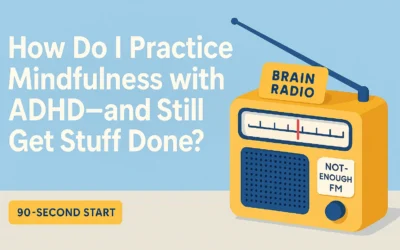

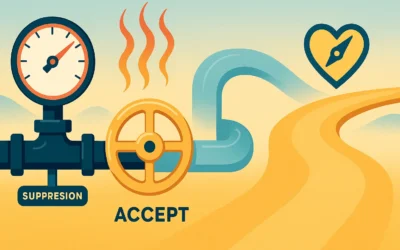
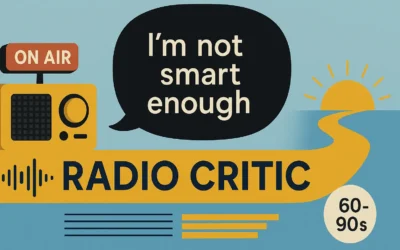
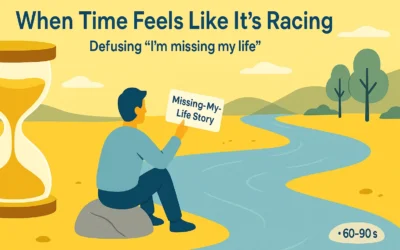
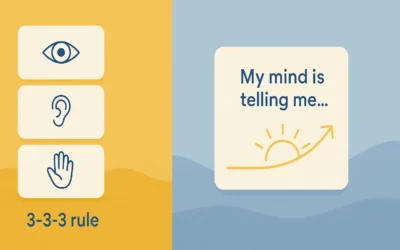
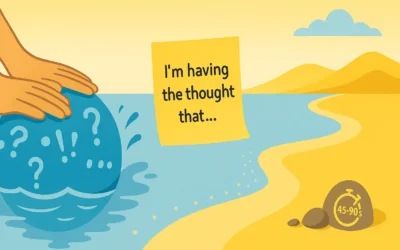
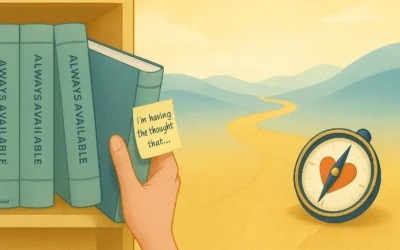
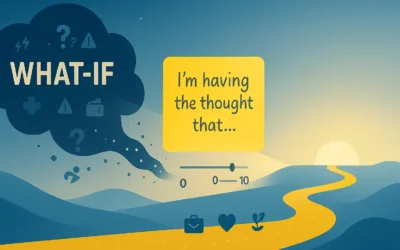
0 Comments